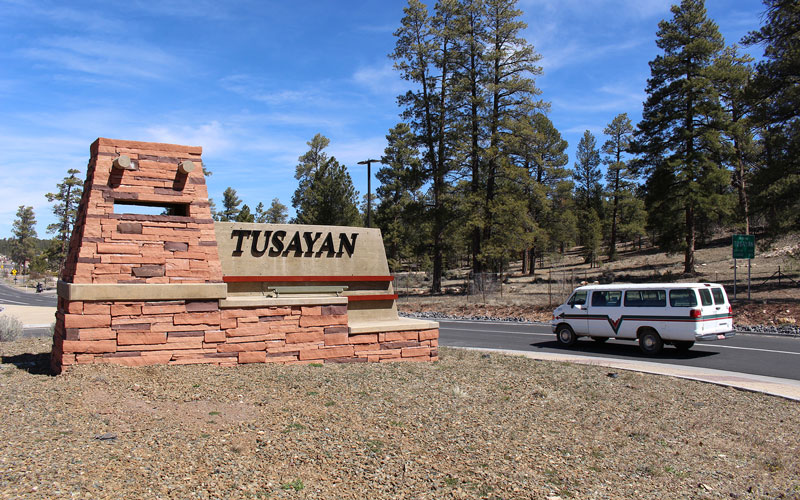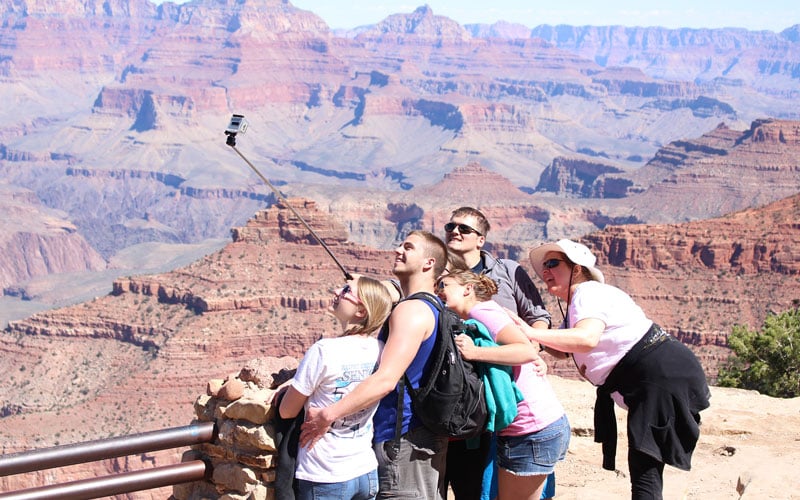WASHINGTON – Arizona lawmakers and advocates are condemning proposed fee increases at the Grand Canyon and 16 other parks, a move the National Park Service said is badly needed to fund billions in backlogged maintenance projects.
The proposal unveiled this week would create a new peak-season entry fee that would at least double fees at the Grand Canyon National Park, which had more than $350 million in deferred projects at the end of last year.
While advocates and lawmakers agreed that park maintenance needs to be funded, they worried that higher fees would make the park unaffordable for some and would “devastate our small businesses” by driving away tourists. Many were upset with the way the fee hikes were announced and the short public comment period, saying the Park Service should work with Congress on a more permanent solution.
“I think everyone who has been to the Grand Canyon remembers that first view … it is just awe-inspiring,” said Sandy Bahr, director of the Sierra Club Grand Canyon Chapter. “We shouldn’t limit that to just people who have more money.”
Rep. Paul Gosar, R-Prescott, said there “is no question” the National Park Service needs to tackle its maintenance backlog, but that what is needed is “a clear strategy from the Park Service that reduces wasteful expenses and works with Congress.”
Interior Secretary Ryan Zinke said in a statement announcing the new fee proposal that “the infrastructure of our national parks is aging and in need of renovation and restoration” and that the increases “will help ensure that they are protected and preserved in perpetuity.”
Under the plan, fees would be raised at the 17 largest national parks, which account for 70 percent of all entrance fees in the park system. The increases would boost fees from just under $200 million in fiscal 2016 to an estimated $268.5 million.
Regular season fees would be largely unchanged but “peak season” fees – May through September at most parks – would rise from $30 per car to $70 per car at the Grand Canyon and the majority of the others. Peak season fees for motorcyclists and per person at the Grand Canyon would double from the current $25 and $15, respectively. Admission would still be free for seniors, those under 16, the military and other special groups.
The parks would keep 80 percent of the money collected with the remaining 20 percent used at other parks in the system.
In the Grand Canyon, deferred maintenance reached $353 million last year, the largest part of a $565 million backlog of “necessary” work at 22 sites in Arizona.
The Grand Canyon projects last year ranges from repairing historic landmarks to evaluating park buildings for energy efficiency, from fixing roads and walls to ridding park of buildings with hazardous materials.
Rep. Raul Grijalva, D-Tucson, said in a statement Tuesday that “Zinke would rather take money directly out of the pockets of hardworking Americans instead of coming up with a serious budget proposal for the National Park System.” He pointed to the administration’s proposed fiscal 2018 budget, which would cut the Park Service by 12.9 percent.
Rep. Tom O’Halleran, D-Sedona, said in a statement Thursday that “public lands are the lifeblood of countless communities.” The “misguided” fee proposal “will not only discourage Americans from visiting and learning about our nation’s great history, it will devastate our small businesses,” he said.
One environmental group said it’s hard to determine what impact the fees will have because the process is being rushed.
“We haven’t seen any sort of market review or analysis,” said Jeff Ruch, executive director of Public Employees for Environmental Responsibility. “We don’t know whether or not this is going to price people out of the parks or what, or at least they haven’t published that information.”
Ruch added that the deferred maintenance numbers cited by the Park Service appear to be “somewhat inflated.”
Emily Douce, the director of budget and appropriations for the National Parks Conservation Association, said the one-month public comment period – it closes on Thanksgiving Day – is not long enough to seriously evaluate the plan.
“There have been raises in fees before,” Douce said. “But it was a much longer and more extensive process with a longer comment period, and more local meetings – something we aren’t seeing this time.”
Douce said a better solution is in Congress right now. The National Park Service Legacy Act of 2017 would create stable funding “for the high-priority deferred maintenance needs of the Service.”
Whatever the solution, Bahr said it should not cost visitors the beauty of national parks.
“We don’t want parks to be unaffordable for the average person,” Bahr said. “The parks need some love and care, but that should be funded, just as other things are funded, through the budget process in Congress.”

